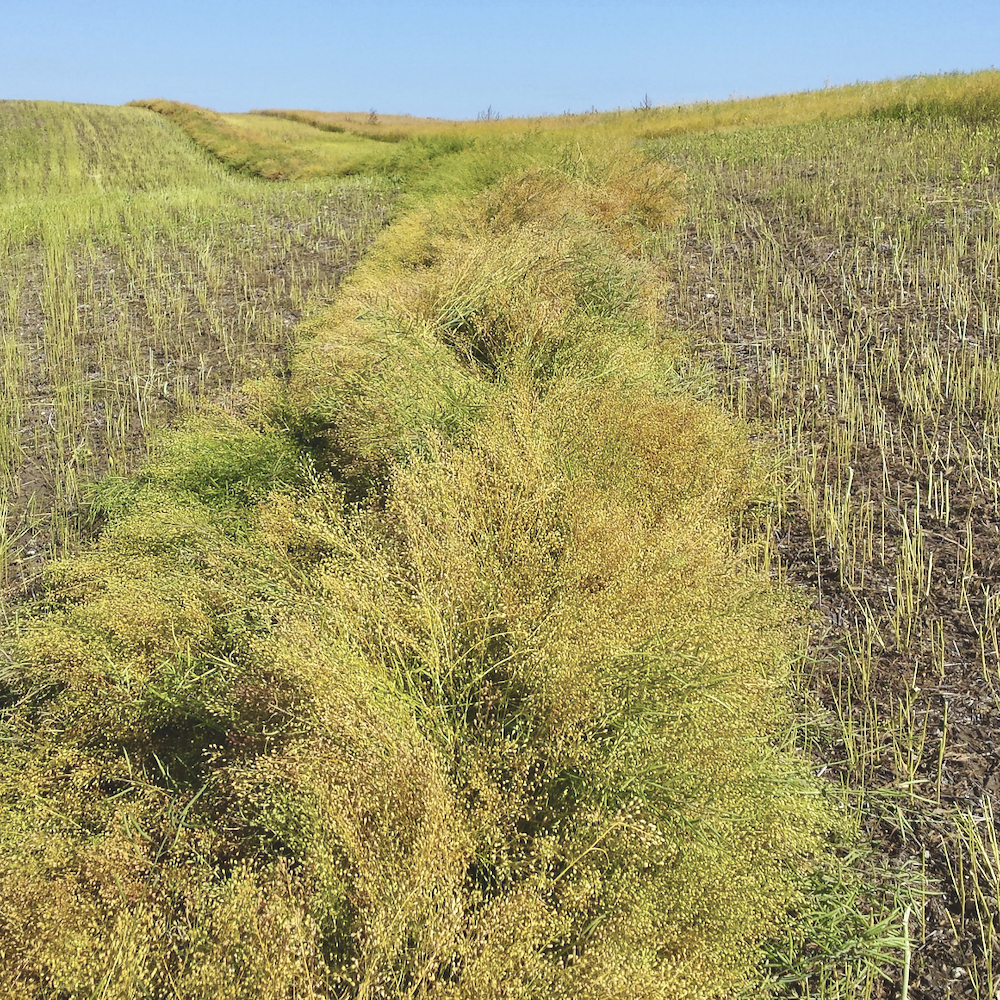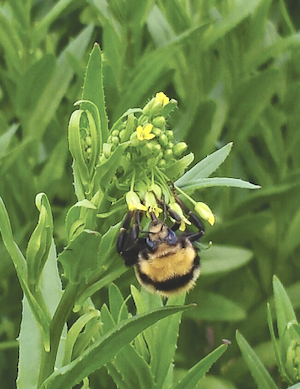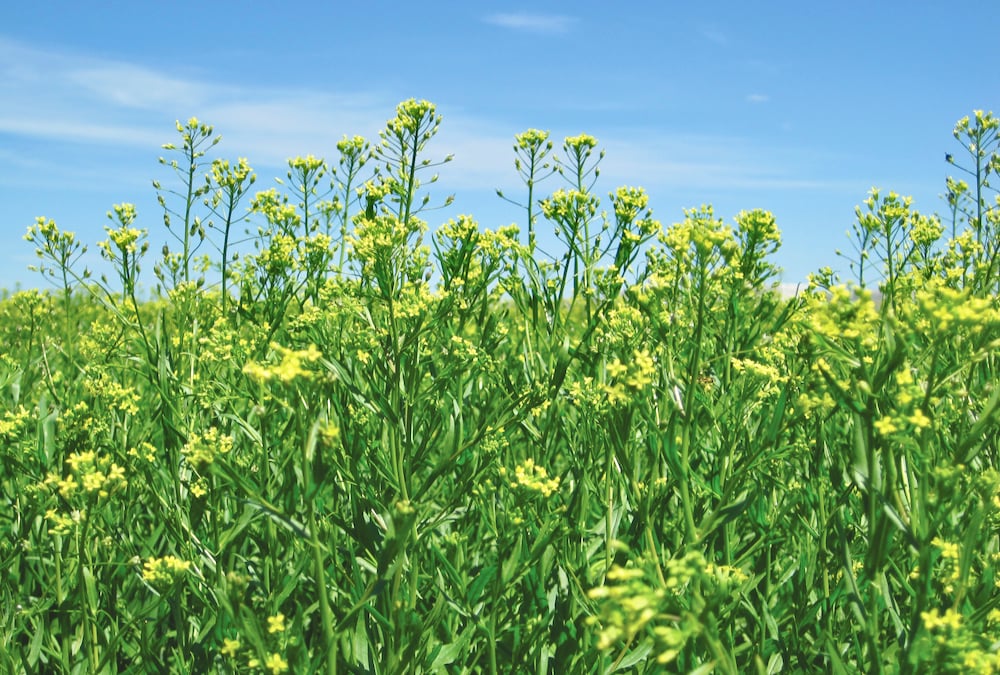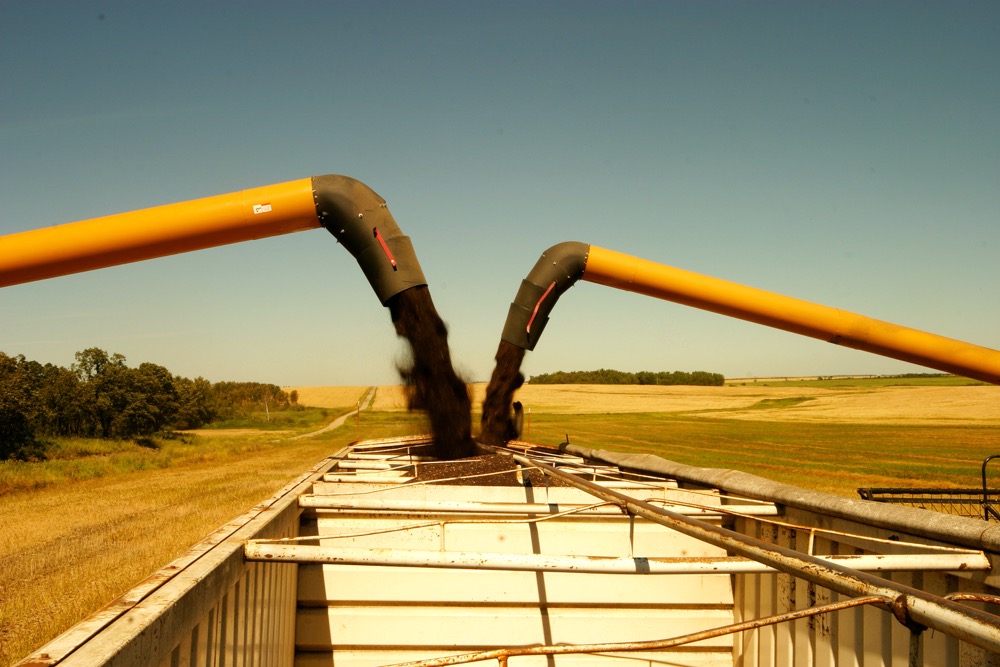Agriculture and Agri-Food Canada’s camelina breeder Christina Eynck seeded a couple of winter camelina trials in Saskatoon late in the last third of September 2019.
Then there was an early freeze-up.
“The plants were only in the cotyledon stage, and very few of them had developed the first true leaves. We thought, ‘This is not going to work,’” Eynck says. “But come spring, the plants looked fantastic and the trials worked out really well. So that was impressive and a really encouraging result, and it potentially opens a wider window to seed winter camelina.”
Read Also

Agronomists share tips for evaluating new crop products and tech: Pt. 3
With new products, new production practices and new technology converging on the agriculture industry at a frenetic pace in recent…
Cold hardiness isn’t the only reason winter camelina might be the next best addition to the winter rotation. Eynck says the crop comes with a host of benefits, from high seed oil content to a favourable fatty acid profile to early flowering. As one of the first to flower in spring, the crop could offer beneficial insects an important spring food source. Like other winter crops, it provides soil cover and helps minimize erosion, with the added benefit of breaking up cereal pest and disease cycles. It also matures earlier than spring camelina and comes off the field in the middle to the end of July, which helps to spread farmers’ workload.
Eynck started working as AAFC’s camelina breeder three years ago. Before that she developed camelina lines for Smart Earth Camelina Corporation. In Saskatoon, she took over a couple of projects begun by retired breeder Kevin Falk, who now works as a consultant for Smart Earth. The projects have led to advanced spring camelina breeding lines with good yield, oil content, seed size and downy mildew resistance.
Another spring camelina breeding project at an earlier stage includes lines with moderate to good sclerotinia resistance.
Advanced breeding lines are grown at three locations to begin with; promising lines are then evaluated at more sites across Western Canada in collaboration with industry partners, including Smart Earth. AAFC is only breeding camelina in Western Canada.
Eynck says there are many more spring camelina types than winter types worldwide, with only a handful of winter varieties.

“These varieties are extremely frost tolerant — they have the same frost tolerance as fall rye,” she says. “They can survive the harsh winters on the Prairies, and to my knowledge, it’s the only winter oilseed that can be grown on the Prairies. This opens up the possibility of a true winter crop rotation when grown with winter cereals.”
The winter breeding program began in 2018 and is still in its early stages, with cultivars a few years away.
Growing markets
About 4,000 acres of camelina were planted in Western Canada in 2019, mostly in Saskatchewan, and about 10,000 acres in 2020. Some of those acres were intercrops with pea or lentil. Eynck says camelina’s growing popularity can be explained by its wealth of benefits and expanding marketing opportunities.
A close relative of canola, camelina is a short-season crop that takes only 85 to 100 days to fully mature, depending on the weather. It’s drought-tolerant and performs well on lower-quality land where other oilseeds perform poorly, Eynck says.
“Because of its frost tolerance, it tolerates early seeding but is also a good option for delayed seeding scenarios, for example, if your first crop freezes off or you have an extremely wet spring.”
In addition, flea beetles aren’t an issue for camelina, plus it’s shatter-resistant and can be straight cut.
While some camelina goes for human consumption, most goes to animal feed markets, says Carlene Sarvas, Smart Earth’s crop specialist. Meal goes to poultry feed markets (broiler and layer hens), while cold-pressed oil is used in aquaculture as a salmon feed inclusion and as an equine and canine feed supplement. Most of the animal feed markets have received CFIA or veterinary health approval within the last few years, Sarvas says.
Smart Earth is Canada’s largest camelina seed company. This past year, the company contracted 9,500 acres in Western Canada. The coming growing season’s estimate is between 10,000 and 15,000 acres. The company pays $11 per bushel for new producers and $11.50 for returning producers.
Sarvas says there’s a lot of excitement around Smart Earth’s new spring variety Cypress, which will replace Midas in all of its contracted acres this year. She says Cypress boasts a 30 to 50 per cent larger seed size, similar oil content, improved emergence and a 12 per cent yield advantage over Midas.a
AAFC’s Eynck says Cypress yielded an average of 42 bu./ac. in performance evaluations conducted from 2015-20 in Western Canada.
Smart Earth is running preliminary field trials for a USDA winter camelina variety but has no extensive winter breeding program yet.
Group 2-sensitive

Eynck says the industry has learned a lot over the last few years about the factors that influence camelina’s success.
The crop does better in well-drained soils and tolerates early seeding, although producers get good results when they take care of the first flush of weeds before seeding.
Eynck says 2020 was the first year producers could use Edge pre-emergent herbicide to take care of broadleaf weeds before seeding. While there is a grass herbicide (Assure II) registered for camelina, currently there is no in-stand broadleaf herbicide option, although Smart Earth has been working on a Group 2-resistant option. Camelina is very sensitive to Group 2 carryover, which means producers have to wait two years between using it on a field and planting camelina, she says.
Seed should be placed shallowly, within the top quarter-inch of soil, and can be drilled or broadcasted followed by a light harrowing.
“Shallow seeding is sometimes a challenge for producers, especially when the moisture isn’t there,” Eynck says. “What we’ve seen is that it’s better to seed it shallow and wait for the moisture to come. Sometimes you have to wait weeks, but when the rain comes the crop usually emerges without problems.”
In-season, producers should keep an eye out for sclerotinia, Eynck says, and they should apply a control product if necessary.
At harvest, the crop can be desiccated then swathed or straight cut, as it has good shatter resistance. When harvesting, producers should adjust concave settings and fan speed to account for the seed’s size.
“That also means you take the crop off on the dirtier side, but that helps with storage of the camelina in the bin because it has a very high oil content, over 40 per cent, so the shells help with storage in the bin,” Eynck says.
















